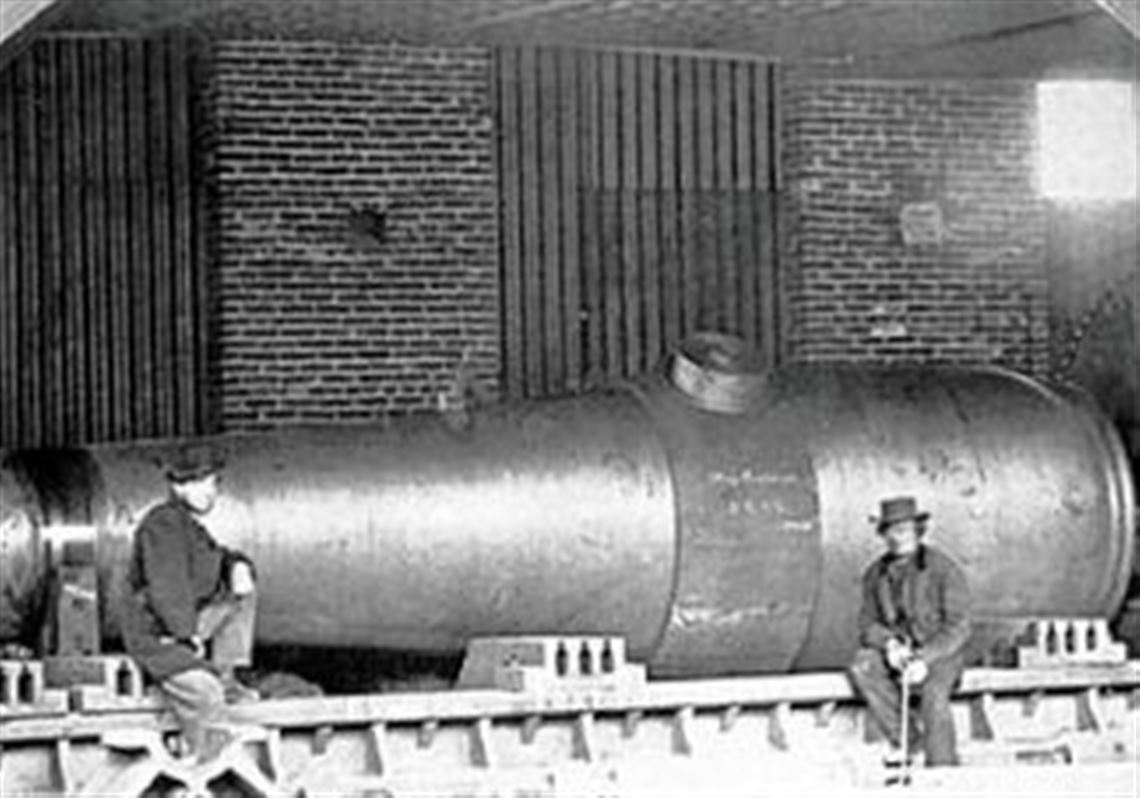Known as the manufacturer of the largest guns ever cast, the Fort Pitt Foundry made cannons for three U.S. wars, including the War of 1812, the Mexican-American War and the Civil War. Joseph McClurg established the foundry at the corner of Fifth Avenue and Smithfield Street in 1804 before moving it to the Strip District at 12th and Etna, just across the street from the Heinz History Center.
Demand for heavy artillery during the Civil War accelerated Fort Pitt’s production, and the foundry’s ideal location at the head of the Ohio River made it easy to ship ordnance to the forts and depots. In 1864, President Abraham Lincoln wanted a super gun that could sink an enemy warship with one shot. The 90-ton smoothbore Rodman Gun measured 20 feet in length and could fire a 20-inch cannon ball 4.5 miles. It was so large that dozens of oxen hauled it from the foundry, and railroad trestles had to be reinforced to allow special flat cars to transport the huge gun.
At its peak wartime production, the Fort Pitt Foundry employed nearly 300 men to stoke the furnaces and operate dozens of lathes and steam engines. In total, the Fort Pitt Foundry accounted for 60 percent of the Union’s cannon manufacturing during the Civil War, making Pittsburgh the “Arsenal of the Union.”
After the war, the foundry continued casting big guns including the 20-inch “Beelzebub,” a smoothbore Naval cannon, and several huge cannons for the Army nicknamed “Satan” and “Lucifer.” By 1878, the foundry was sold to a rival, and the remaining ordnance became scrap metal or was shipped to nearby Allegheny Arsenal.
In 2013, researchers and History Center curators spent more than two months creating an exact replica of the Rodman Gun utilizing 3-D printing technology. The reproduction weighs nine tons and spans 26 feet in length. The barrel alone measures 20 feet with a 16-foot circumference at the widest point.
Visitors to the Heinz History Center can see the replica Rodman Cannon in the museum’s Great Hall and learn more about Pittsburgh’s impact during the Civil War as part of the “Pittsburgh: A Tradition of Innovation” exhibition. For more information, visit www.heinzhistorycenter.org.
First Published: January 5, 2017, 5:00 a.m.















